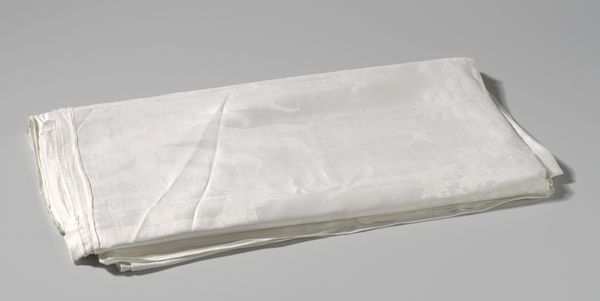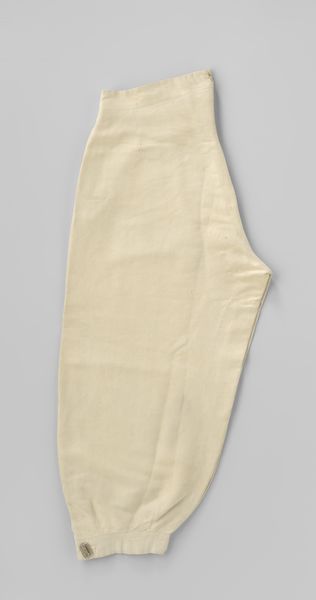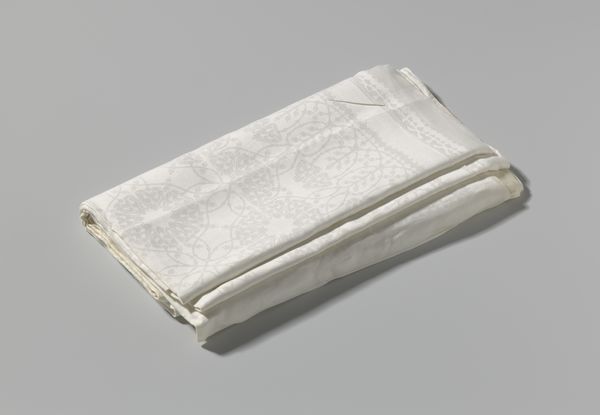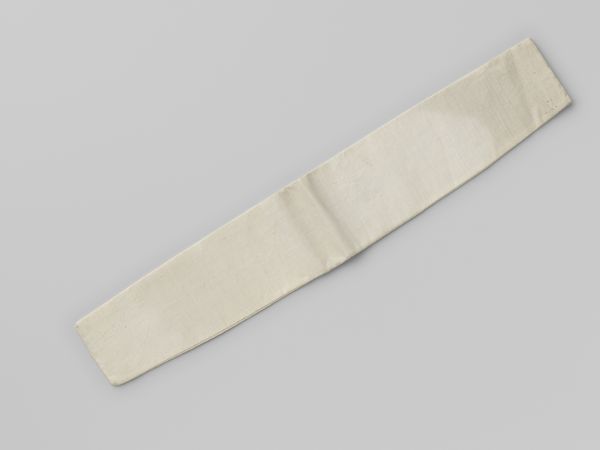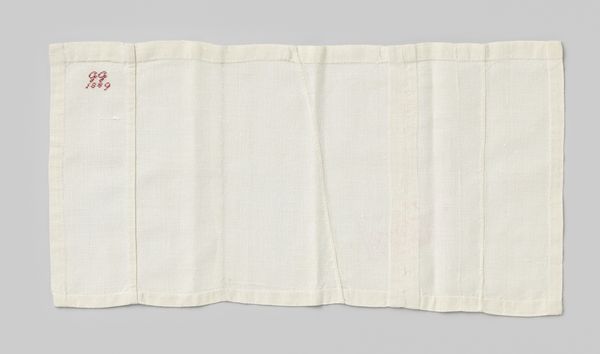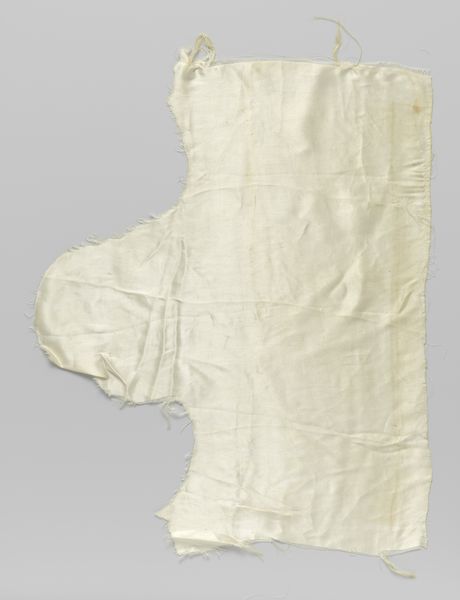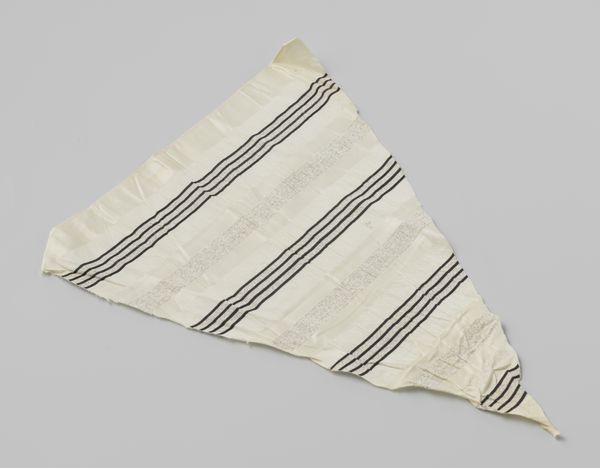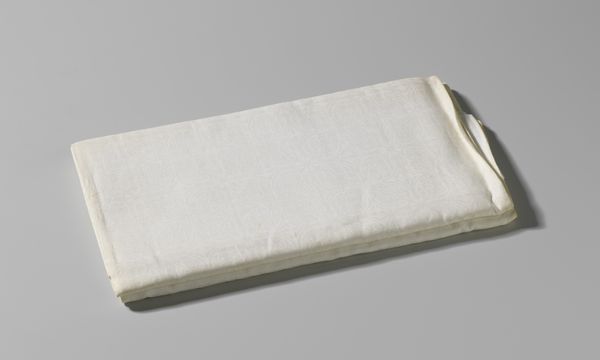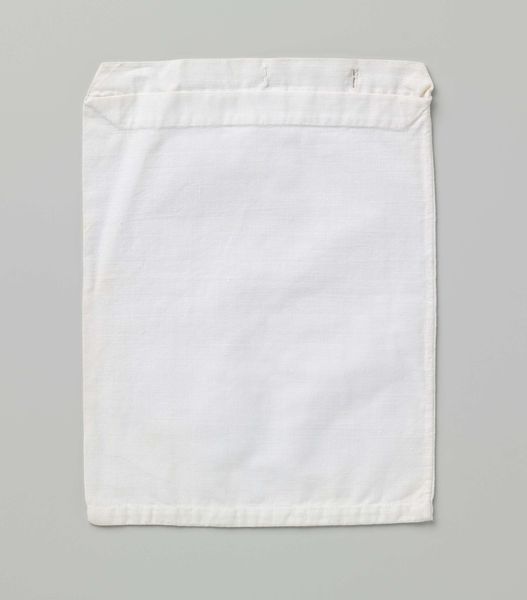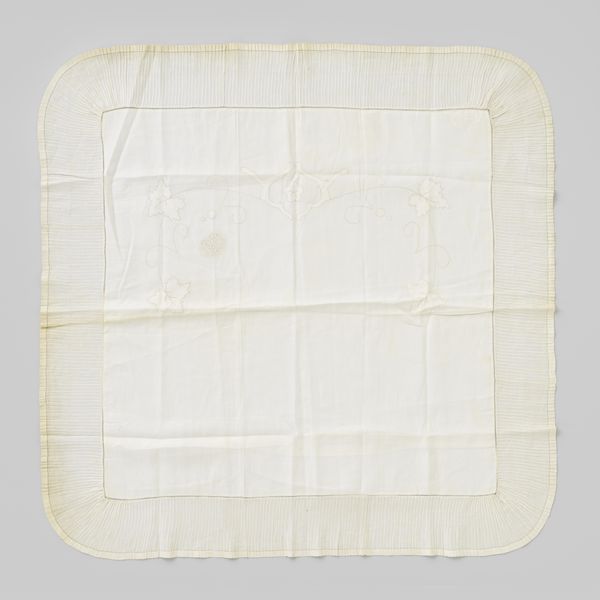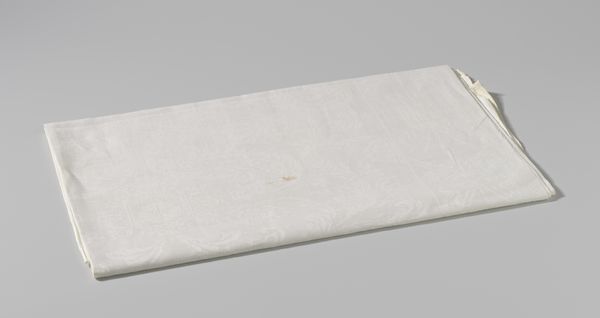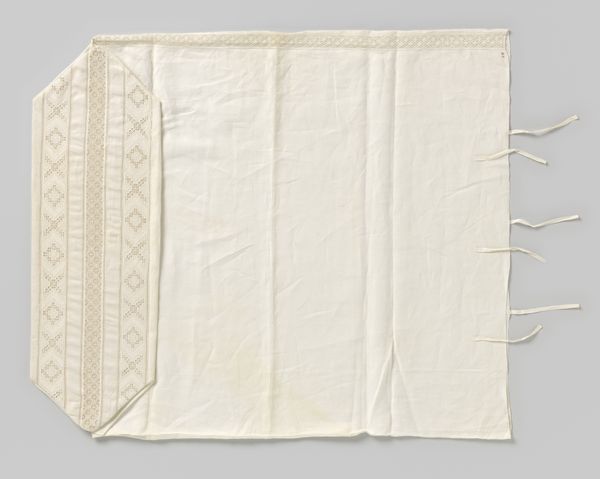
textile
#
dutch-golden-age
#
fashion mockup
#
textile
#
bright focal point
#
teen youth wear
#
white focal point
#
soft and bright colour
#
clothing photo
#
artificial colours
#
design mock up
#
imprinted textile
#
clothing design
Dimensions: length 30 cm, width 14 cm
Copyright: Rijks Museum: Open Domain
Curator: Let’s take a look at this object, entitled "Kindermouw van wit linnen met opslag", a child's sleeve made of white linen dating from around 1888 to 1894. Editor: It has a sort of stark simplicity, doesn't it? The whiteness is almost blinding. Curator: Absolutely. Consider the material itself – linen. It speaks to specific socio-economic circumstances of the time. Linen production and its accessibility were tied to complex systems of agriculture, trade, and labor. The child's social standing, too, can be decoded via the labor-intensive nature of creating such a garment. Editor: Yes, but I’m struck more by the construction of the sleeve itself. The seams, the way it’s turned up. Visually, there's an elegance despite its utilitarian nature, with careful folds creating patterns of light and shadow. It creates form out of simplicity. Curator: But that simplicity is deceptive! Who produced this garment, and under what conditions? Was it mass-produced or tailored? The garment bears no maker's marks. Was this made out of necessity or was the material and labor symbolic of an aspiration for luxury? Editor: Of course, the social context is important. But consider the aesthetic impact. The pure white evokes innocence, even fragility. Its state and cut denote functionality as much as possible trends for youth fashion at the time. Curator: Well, yes, it speaks of a certain aesthetic, perhaps influenced by ideas of purity or hygiene of the period, the construction of white cloth necessitates frequent washing... labor meant for someone in a particular societal echelon to begin with, continuing this circuitous interplay. Editor: The crispness against the plain backdrop does present an interesting formal contrast, and the play of light and shadow does emphasize the three-dimensionality and construction that evokes function over strict fashion. It invites questions about childhood itself— a life yet unlived, projected hopes. Curator: So, a humble garment reveals a layered world of production, social structures, and material value. It transcends simple functionality to expose its place within a much grander, complex arrangement of its historical creation. Editor: I find myself contemplating how minimal form encapsulates such fundamental experiences of youth.
Comments
No comments
Be the first to comment and join the conversation on the ultimate creative platform.

